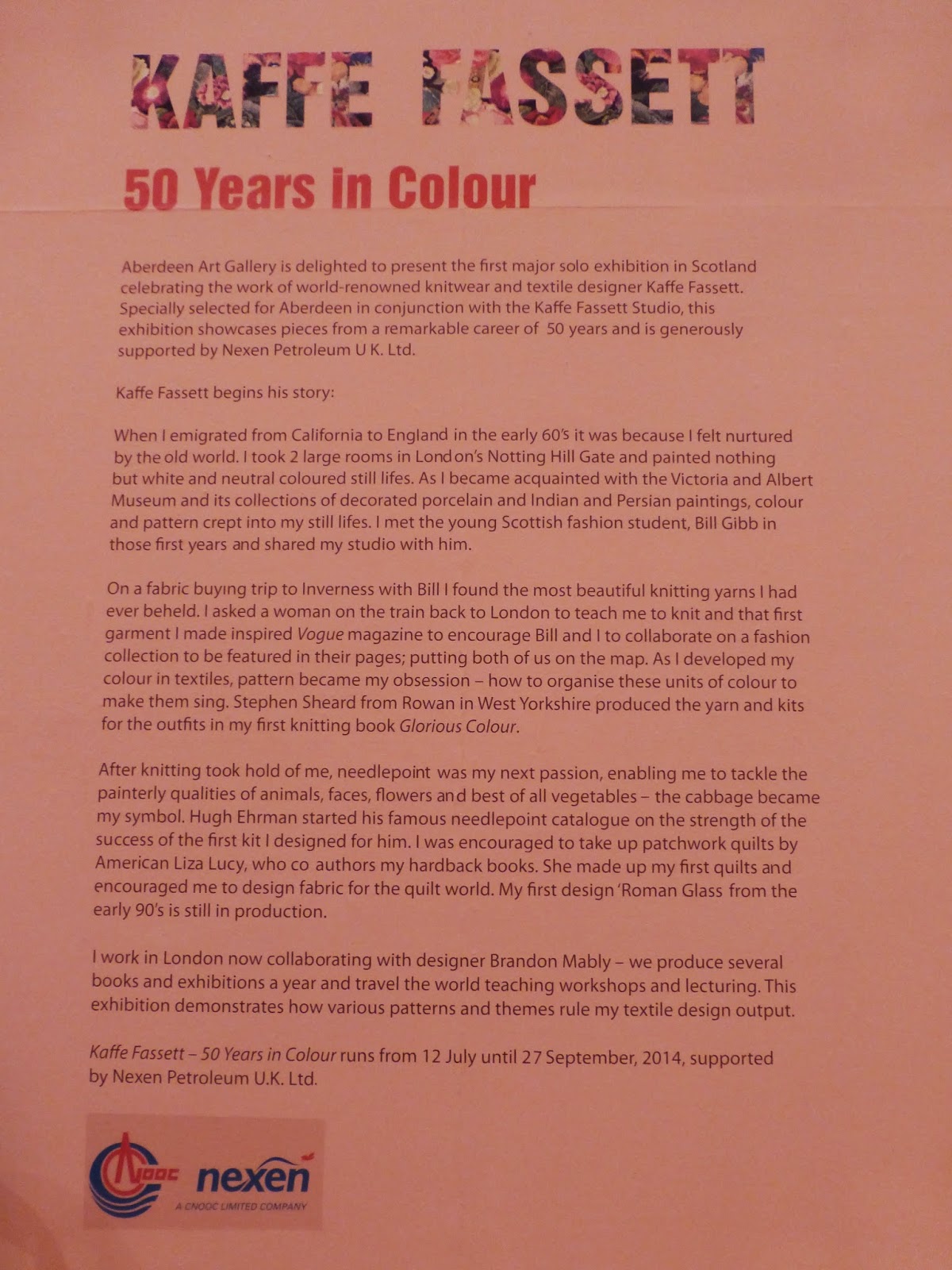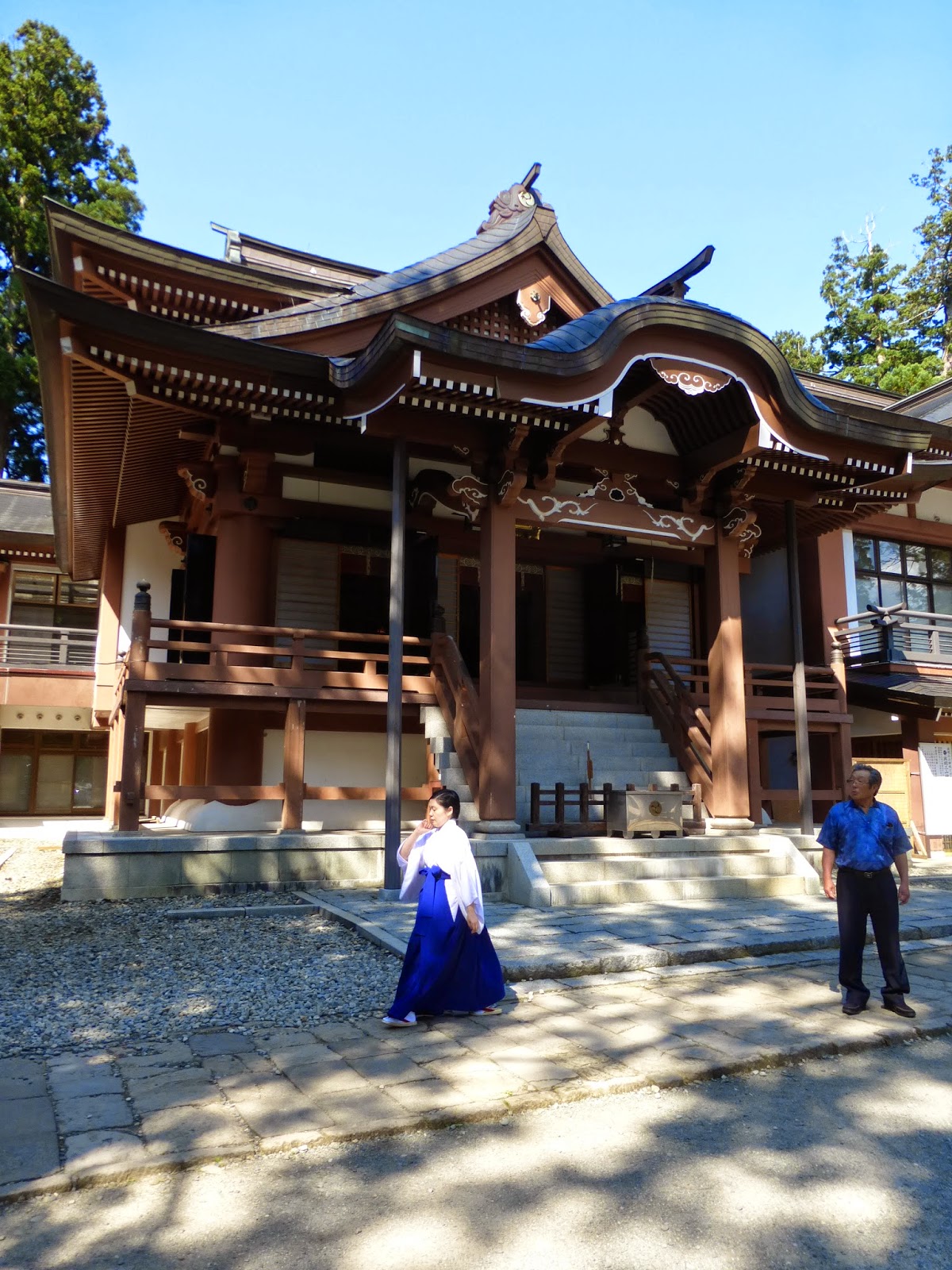One of my friends from Wrexham Quilting Circle, Maureen Poole, visited for a long weekend, so I had a few days off while we did crafty and touristy things. On Friday, we went to Letham Crafts (an amazing independent craft supplies shop in Letham) and Forfar, including stopping to see the replica of the Dunnichen Stone next to the parish church at Dunnichen (the original stone is in the Meffan Institute in Forfar, but the replica looks more attractive out in the open - here's the designs). On Saturday, we went to Aberdeen, stopping first to see Aberdeen Quilters' exhibition in the at the Gordon Highlanders Museum. Sorry, it was the last day of the exhibition!
Lovely work. The 'camo' effect walls in the Education Room set the colours off much better than the usual cream gallery walls.
Some of their mystery challenge quilts - the design looked rather complex. The finished blocks are on point and it all started out with a large triangle square.
Making the most of the trip north, we then went on to Aberdeen Art Gallery for Kaffe Fassett's '50 Years in Colour'. On until 27th September 2014. The Dolphin with knitted adornment seemed appropriate as a welcome -
It was great being able to see his needlepoint designs up close, although many of the tent stitch designs haven't fared so well over time - tent stitch tends to distort the panels and I know he (used to?) stitch without a frame, which doesn't help 'set' the canvas straight. The straight stitch wallhangings are beautifully shaded.
I enjoyed seeing his 'Map' coat again - I first saw this in Aberystwyth in 1989. Some of the knitting isn't perfect but the colour shading and overall impression is fantastic. It gives the feeling of being one of those projects that pulls the maker along and would have been impossible to put down.
There were several works in progress pieces. The way of 'painting with thread' with just a few outlines is the same way I work on original needlepoint designs, although I sometimes tint the background down as well, especially if I am using white canvas.
Glyn liked this knitted blanket very much.
A lot of the shading effects were done by plying up yarns together - very subtle.
Some more works in progress - experiments or UFOs? Sometimes you just have to try something out to see if it works.
The square in a square pattern is always a great favourite for any textile artist.
These cushions remind me of the 'leftover thread' needlepoint projects stitchers used to do, but a bit more designed.
Love the Scandinavian figures on this jacket.
Several pieces to prove not all of Kaffe's work is ultra bright or strong colours...
Rather like the displays at Quilt Week Yokohama last November, the gallery walls were strong colours, which set off the textile pieces very well.
The randomness of this quilt was more appealing that the more formal version hanging next to it.
I liked the blue and white cushions with so many blues - always more interesting than trying to match blues throughout a project - and the little knitted striped sample.
Glyn liked the leaf coats, but I'm not attempting to knit that!
The gallery has a superb collection of paintings. Here's just a few from one gallery of C20th British landscape paintings. We will have to go back to see these at leisure, as we were fitting in a trip to Rainbow Fabrics at Old Meldrum as well...
Maureen and Glyn in the central gallery.
This is the piece Maureen made for the 1718 Coverlet book - you may also have seen some of her work in my 'Compendium of Quilting Techniques' ('200 Tips, Techniques and Trade Secrets for Quilters') as I featured her 'Brown owl' waistcoat in the stained glass applique section, showed her 'Cats' bag and the printing blocks in the printing section and another bag in the Japanese folded patchwork instructions.
We rounded off the weekend with a trip to Glamis Castle on Sunday and Glyn got a bit more done to the summerhouse too - the 'porch' roof.









































































































































































